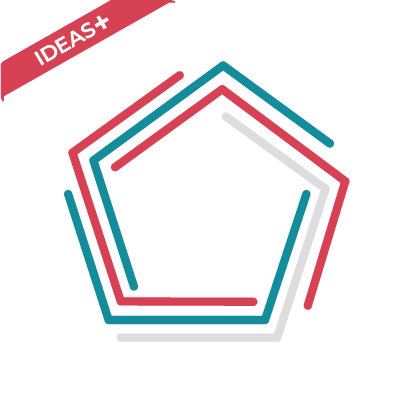-
TrendsDiversity, Equity & InclusionTalent
-
SectorOthers
-
CountriesGlobal
The facts are well known. We haven’t bridged the gap. Recent news has revealed that Spanish girls have a much lower failure rate in school than their male counterparts. Female university students have outnumbered and even outperformed their male counterparts academically for many years. However, when the focus shifts to the labour market, this trend doesn’t continue. In absolute numbers, there are fewer women than men working, and this is also reflected in the rates provided by the INE for this particular occupation or activity. This gender gap, which often goes hand in hand with lower pay, is shared by all age cohorts and increases as women get older. This gap grows as professional responsibility increases, until it reaches a maximum differential at the senior management level. Self-employment and entrepreneurship unfortunately fare in the same way.
There is no single glass ceiling, which is the expression so often used to refer to the absence of women in the most senior positions in companies. There are many ceilings. This situation affects not only female managers, but all women, of all ages and at all hierarchical levels. We’ve been referring to the concept of broken rungs on the social ladder for some time now. The equality ladder is working broadly across compulsory and higher education, but as soon as one enters the professional stage, the broken rungs that hinder women’s ascent to full equality begin to appear.
Some of the rungs that women cannot count on when climbing this ladder are well known. Others, less so. One simply needs to see a list of these challenges to become aware that the problem of untapped talent does not lie exclusively in the board of directors or executive committees of companies. It starts downstream. It has come to be known as the flip or funnel effect, because of the drastic reversal of the figures, from a majority of women entering at the bottom of the career ladder to a clear minority in senior management. The McKinsey study found that only 72 women out of every 100 men are promoted to middle management in the United States.
It should therefore come as no surprise that, as the Gender Diversity Index found, only 10% of the 668 largest listed companies in 18 European countries secured gender parity in leadership positions in 2020. Taking a closer look at Spain, one of the first countries to introduce gender diversity legislation for boards of directors, the number of female directors in listed companies increased to 23.7% and 27.5% for the IBEX 35 in 2019, still far from parity.


Some broken rungs to consider:
1. The broken rung of ambition. Professional women cannot leverage ambition/motivation as a step in advancing their careers because society fails to recognize ambition in women. This rung is quite solidly accessible for men as it propels them to move on to the next stage in their careers. Beatriz Belmar from the University of Comillas points to a widespread belief that women are less ambitious in the workplace and if they fail to reach positions of maximum power, it is not for lack of opportunities, but because they do not really want it as much.
Yet the reality is, according to a BCG study, that women show at least the same level of ambition as men at the beginning of their careers and this level does not diminish after becoming mothers.
2. The broken rung of unpaid labor. While well known, it is nonetheless painful. This one anchor women, impeding their promotion instead of serving as an impetus to continue up the ladder of equality. Women spend much more time doing unpaid labor (family care and domestic chores) than men. This phenomenon is common in all OECD countries, according to their own statistics, and inevitably means that women can devote less time to their careers, with the consequent loss of professional opportunities.
3. The broken rung of biases. An experiment conducted by psychologist Corinne Moss-Racusin offers some insight into how mental traps or unconscious stereotypes, the result of a male-dominated culture, undermine how women are perceived. Moss-Racusin sent the same resume to one hundred and twenty-seven employers, with the only difference being that the candidate’s name was female on one half and male on the other half. The result was that, with identical merits, the man was rated as significantly more competent and suitable for the position and was offered a higher starting salary and career guidance. This discrimination is so prevalent that the assessment was identical, regardless of the recruiter’s gender. These are biases that create obstacles to women’s advancement in the corporate hierarchy, placing them at a clear disadvantage compared to their male colleagues. Despite detrimental effects, the identification and neutralization of these biases is very complicated because they are deeply unconscious and outside of the woman’s control.
Belmar has defined this trend as unconscious biases that attribute traits to women that are theoretically the opposite of what a good leader should possess; consequently, they are required to demonstrate superior performance in order to advance professionally. Women not only encounter broken rungs, but their goals are also further from reach than their male counterparts.
4. The broken rung of wages. In many cases, men are paid more for the same work than women. Funcas analyzed the gender wage gap in Spain and, while it was halved in the decade prior to the pandemic, the average hourly wage per hour worked is still 8.5% higher for men than women in 2020. When examining the Spanish gender wage gaps by age group, however, Funcas researchers noted an interesting quirk. The gender pay gap is negative for workers under 25 years of age, and barely 1% for workers aged 25 to 34. This is great news, since this tops all other European countries. However, the gap widens after that age, and continues to do so until workers reaches the age of sixty. Again, the ladder works until you turn thirty and from then on the salary rung no longer serves to support you as the wage gap widens.
5. The broken rung of visibility. LLYC has extensively analyzed this burden on women’s development: the visibility differential that society (the media and social networks) instates between men and women. Women’s corporate invisibility has become commonplace, as if they were the ones who, out of modesty or shyness, preferred to step out of the spotlight and obfuscate their roles. In reality, this phenomenon is often the result of corporate strategies, almost always unconscious, to silence female executive talent. This research, which analyzes conversations on Twitter, demonstrated the low visibility of women in the business world, which has led to a significant lack of female references. This fact not only has a negative impact on young people and adolescents who aren’t inspired to develop their full potential, but also impacts the trend of total or partial abandonment of professional careers by talented women when they have to do the labor of motherhood or elder care. The loss of talent is not only unfair to women, but also costly to business. We will return to this issue later. The Woman Forward Foundation, led by Spanish executive Mirian Izquierdo, has been demonstrating this trend for some time with its research reports.
Our document emphasizes, without it being a contradiction, that women are both made invisible by the dominant culture, and they place themselves in the shadows so as to not stand out. This may be caused by the well-known “imposter syndrome,” or due to the need to survive in the face of so many daily responsibilities, or because men, as one study mentions, opt for a position if they meet 60% of the required skills, but women do not do so if they do not have 100%. The reality is that some women do not want to be visible in the promotion process. The acquisition of skills, such as the ability to express themselves in front of a professional audience with total confidence or to build a personal brand, would provide a solid steppingstone to boost their visibility. It’s not just about gaining confidence, it’s about gaining qualifications. As a woman, it is even more imperative to cultivate these kinds of soft skills of communication and positioning to develop a successful career in business and corporate governance.
It is also possible to make professional women more visible by using testimonials of female workers to serve as an example and reference. The visibility of female talent accelerates equality because it normalizes the presence of women in those sectors. In all of this, communication and empowerment skills play a fundamental role. For women managers, it is essential to cultivate soft skills in communication and authority in leadership of their teams to highlight their management skills and enable them to achieve their objectives and develop their full potential.
“The average hourly wage per hour worked is still 8,5% higher for men than women in 2020”
Training
The social ladder of gender equality can be repaired with policies inspired by the Sustainable Development Goals of the United Nations 2030 Agenda that governments and companies around the world are putting in place. From here we welcome the implementation of quotas, blind curricula, monitoring the employment and salary gap figures, and the implementation of reconciliation policies without distinction of gender. While there is a risk of some labeling the above as pinkwashing or actions that are solely focused on the company’s repuation, hundreds of thousands of women have benefited from these programs.
However, this article focuses on the need for women themselves to overcome this marred rung of unequal training. They need education to reach out to other women, education to overcome their fear of public speaking, education to have personal branding tools, education to update their knowledge, and finally education to have the same weapons to promote themselves as their male colleagues.
Of course, mentoring is also key. The company can set up an internal mentoring program or they can participate in existing programs specifically designed to develop female talent and mentor women professionally. Secondly, it is essential to raise awareness of diversity at all levels and address day-to-day details such as the use of inclusive language, tests to identify unconscious biases and hidden prejudices, and managing meetings to listen to women, who tend to speak less and be interrupted more.

Competitiveness for companies
The commitment to equality is not exclusively a question of ethics and responsibility or of personal self-esteem. It is a clear source of competitiveness for companies. Companies are competing with a tied hand if they fail to take advantage of potential of female talent. McKinsey examined over 1,000 companies in 15 countries and concluded that the most diverse executive teams are 25% more likely to be more profitable than those with lower levels of gender diversity. A company that fails to align its business efforts with equality will not be able to compete in the future, access private investment or public funding, attract the best talent, or achieve consumer preference. Another recent survey found that 85% of consumers believe it is important to buy from companies that champion causes they believe in. It is no coincidence, for example, that companies with BCorp social impact accreditation have on average three times the sales of their competitors in the same sector.
At LLYC, we will never tire of utilizing the current opportunity of technological disruption. Half of today’s jobs will disappear because their tasks are susceptible to being digitized and therefore automized. However, soft skills will become more important than ever because no machine can replicate them. The skills that are going to be most in demand will be the so-called higher cognitive skills, among which will be social and emotional skills, public speaking, resolving personal conflicts, managing change (but also time or stress), empathy, emotional intelligence, and ability to work on teams. Cultivating these soft skills will require men and women to engage in continuous training processes, either for reskilling or upskilling.
Personal branding
We can’t forget the need to cultivate the personal brand of professional women in the company. This is the only way they will achieve the visibility to build that rung that is so necessary to continue climbing the social ladder.
The term personal brand was coined in 1997 by Tom Peters in an article he entitled “The Brand Called You.” Personal branding is, for this author, the vehicle for consciously defining and communicating the value of each employee and, instead of serving a company, product, or service, will serve professionals who seek to position themselves in the market individually. The process of personal brand management is known as personal branding. This process is alive because, as Peters rightly points out, every socioeconomic and cultural environment is volatile, and this demands a dynamic, adaptive, transformational, and enriching approach to personal brand management. “If you don’t know where you are going you can end up anywhere.” This quote by Aaker and Álvarez Blanco illustrates in a very simple way the relevance of workers keeping a goal in mind while working on their personal branding.
The good news is that it is always a good time to address and enhance the personal brand. With the right strategy and a good dose of perseverance it will become the most effective identity asset, with the capacity to be revalued over time.
Whether you are an employee, an entrepreneur, or an active job seeker, cultivating a personal brand is becoming increasingly important to identify, pursue, and achieve your career goals. A survey conducted by CareerBuilder shows that 70% of companies evaluate candidates by analyzing their social networks, and another study points out that up to 57% reject applicants based on what they found on them. In other words, awareness of how our behaviors directly affect how others see us allows us to change them and positively influence the image we project.
“Most diverse executive teams are 25% more likely to be more profitable than those with lower levels of gender diversity”
When topics such as personal branding and women are brought together, it is common to find dissimilar and, not infrequently, contentious points of view. It should not be ignored that although women face additional barriers to managing their personal brand, now is the time to start. During the pandemic and now, with what is referred to as “The Great Resignation,” a disproportionate number of jobs for women are being destroyed. Specifically, the United States is not expected to reach the pre-COVID level of female employment until 2024. Now, at a time of economic, energy, and social crisis, is when women should look to the world of work. Whether looking for a first job, a new job, a promotion, or to create a competitive advantage, we believe it is essential for every woman to present who she is, what she does and what she does not do, what she stands for, and what she believes in.
It will not be easy. In a world of work where gender stereotypes and roles are still very present, women can be tempted to define their personal identity by what is expected of them instead of their own aspirations. One of the first hurdles for a woman in defining personal branding is that it is likely that more will be demanded of her than her male counterparts. Another challenge for women is the definition of leadership style. How can we ignore the fact that women leaders are assumed to have personal traits that are considered feminine that are considered contrary to the masculine traits that define natural leadership? That is why it is vitally important to finally bury the idea of labeling traits as gender-specific, thus ending what is known as double bind.
Personal branding and women’s visibility are not cause and effect: the former is a catalyst for the latter. A well-managed personal brand helps reinforce self-esteem and assertiveness; therefore, it will not only provide more confidence when facing the challenge of self-promotion, but will also express the authenticity of each woman. Knowing who she is and accepting it; defining herself succinctly; identifying strengths and areas for improvement; speaking, writing, and sharing opinions; championing causes she believes in; and recognizing allies, will drive determination to gain greater exposure by offsetting risks and mitigating potential fears.
The fact that women find themselves in competition for limited positions, which have traditionally been held by men, may keeps them from creating camaraderie. Working on personal branding helps create connections and opportunities to cultivate and share one’s value with others, inspiring others to do the same.

Each woman has to identify certain features that are inimitable as a whole. Your brand should be based on what makes you valuable, how different your box of attributes and values is from that of other professionals, how relevant you are to the organizations and people in your ecosystem, and how much you can develop and keep your value current over time. Once you’ve defined the DNA of your identity, it is necessary to make it tangible. For this purpose, there are two dimensions to be taken into account: verbal and visual.
Verbal identity defines how we speak and behave: What is the tone of voice that defines your communication? How should you speak and behave so that your own style is recognized? In short, how to project your desired meaning without falling into oblivion. Former German Chancellor Angela Merkel is an example often used to highlight excellent personal brand management that has remained true over the years. In Spain, Ana Patricia Botín and Marta Ortega are good references.
The visual dimension of women’s personal branding is somewhat more complicated because of the beauty expectation gap phenomenon, associated with the fact that women’s skills and abilities are often overshadowed by what they wear. Queen Letizia has been able to turn it around, turning the outfit into a message. There is nothing more powerful than managing and controlling the messages we want to send with all the elements we have at our disposal, and these need not only be external, but also internal, such as vision of the future and self-identification.
Conclusion
The data show that, despite advances in women’s education, the workplace has yet to catch up. The numbers are like a funnel, at the base there is a majority of women graduates who enter the labor market, but in the end only a minority reach the highest levels of responsibility. In this journey from the bottom to the top, men often ride an elevator that takes them to the elite. Women, with comparable or greater strengths, have to climb a tiring ladder that has broken rungs that make ascension difficult, or force them to stop altogether. The metaphor of the broken rungs, compared to the idea of a glass ceiling, better reflects the reasons why the change towards equality takes so long . One of these broken steps is the lack of visibility for professional women, either for intrinsic or extrinsic reasons.
This article was drawn up to show training as a great opportunity to repair that rung and enable women to continue climbing the ladder.
Authors
Almudena Alonso
Bárbara Ruiz



